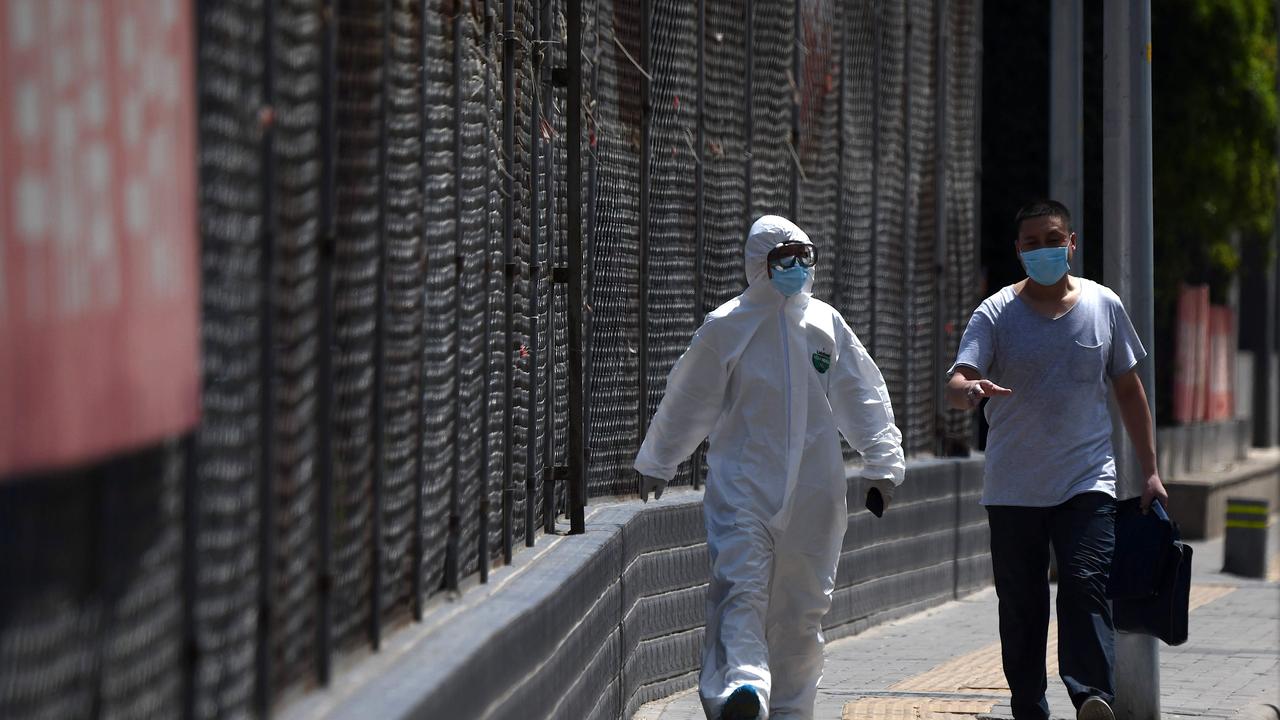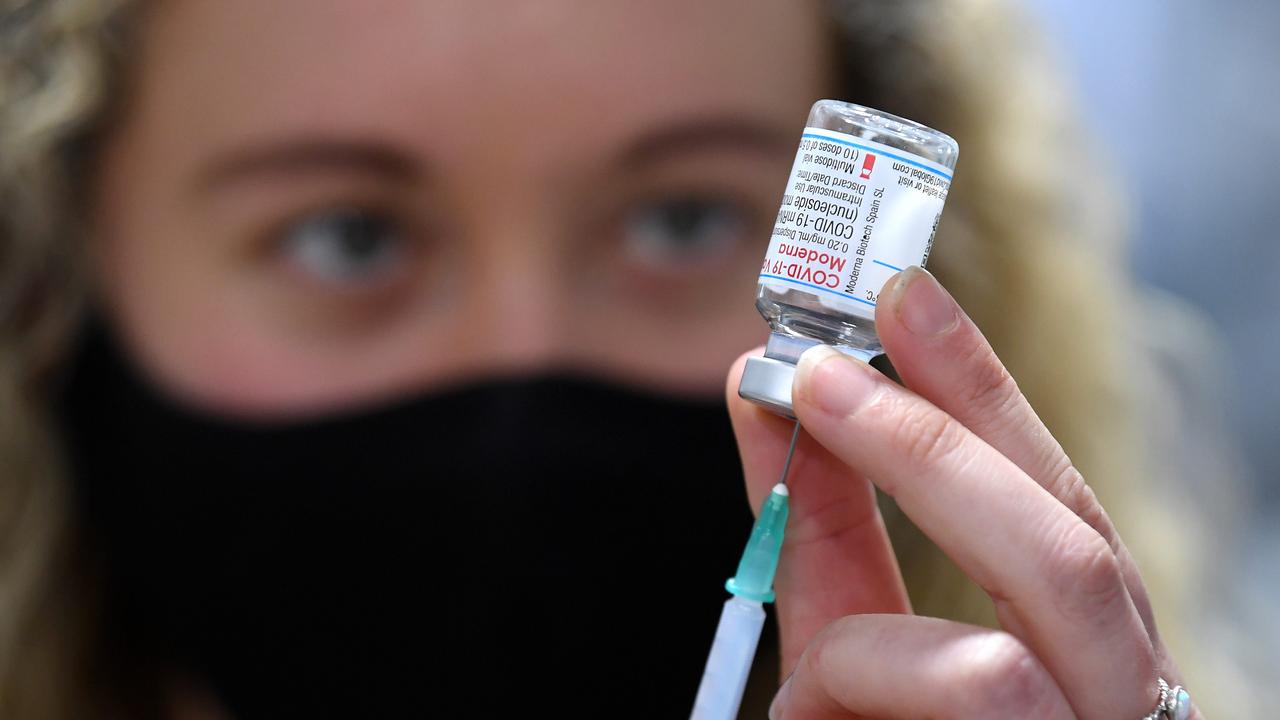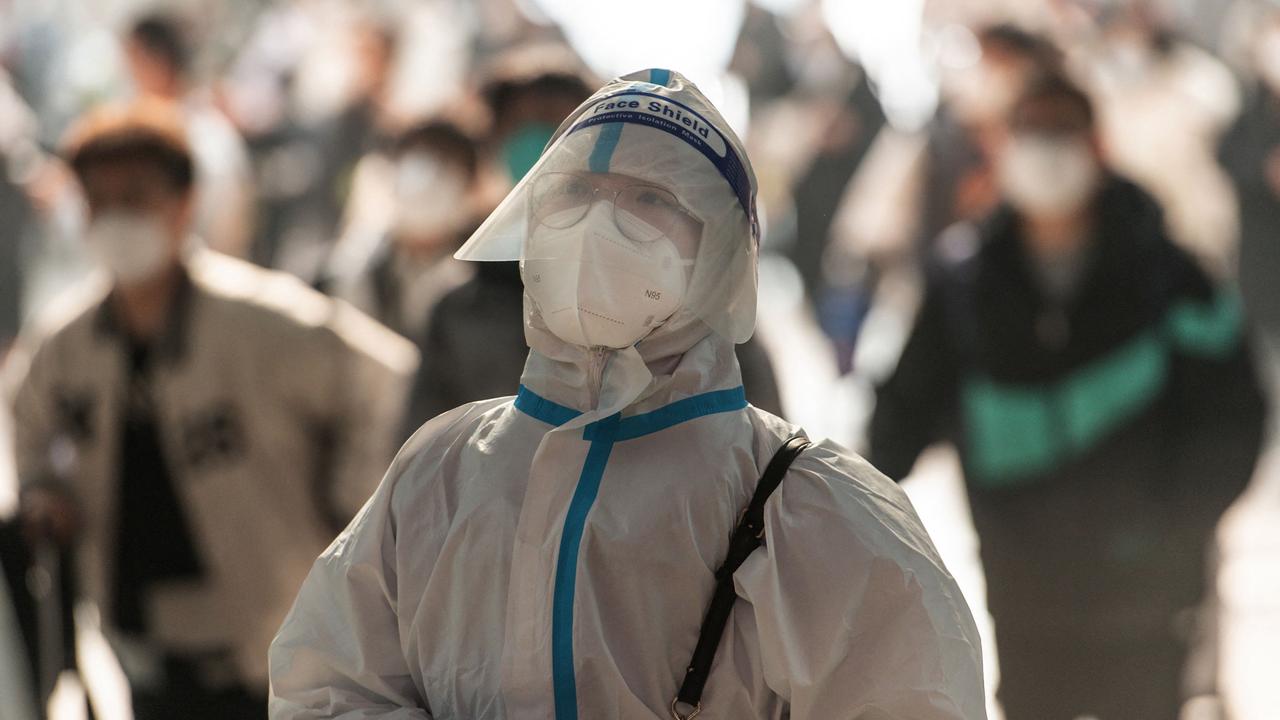Coronavirus: Fears of second wave as China reports uptick in cases
A new cluster of coronavirus cases has triggered global fears about a second wave of infections, as countries prepare to reopen their borders.
China was initially hailed for its response to the coronavirus, being the first country to go into a total lockdown to curb the spread.
But the country has just recorded its highest daily number in two months, triggering fears of a second wave of infections as many other regions prepare to open their borders.
CHINA RECORDS WORRYING NEW UPTICK IN CASES
Over the weekend, Beijing’s largest seafood and produce market was shuttered and surrounding neighbourhoods were placed into lockdown after more than 50 people tested positive for the coronavirus.
According to the Beijing health commission, nearly every one of the 53 people who tested positive had worked or shopped at the Xinfadi market.
The Xinfadi market was closed by authorities as they raced to contain the cluster.

Officials in Fengtai, home to more than two million people, announced on Saturday that the district had established a “wartime mechanism” to deal with the fresh wave.
Police cars patrolled the streets outside the blocked-off neighbourhoods, and AFP reported a bus carrying workers in hazmat suits.
Beijing has also tightened traffic controls into and out of the city, barring inter-provincial tour groups and suspending sporting events, according to official announcements and local news reports.
Plans for first, second and third grade students to return to schools throughout the city today were immediately suspended.
‘DON’T LET YOUR GUARD DOWN’: WHY CHINA’S INCREASE IS WORRYING
Despite being the site of the first major coronavirus outbreak – with the first reported cases tied to a wet market in the central city of Wuhan – China’s government has since loudly promoted its apparent success in controlling COVID-19’s spread.
The country had largely tamed the virus through severe restrictions on movement – a strategy that was later adopted by many countries around the world.

But this new wave, which comes as many countries are easing their borders, shows now is not the time to get complacent.
European countries are easing some border controls after coronavirus lockdowns, even while pre-pandemic levels of travel are a long way off, desperate to rejig economies that have been shattered by restrictions.
The Schengen area of 22 EU countries plus Iceland, Liechtenstein, Norway and Switzerland operates control-free crossings, but they have been mostly closed for three months to all but goods traffic and critical workers.
European Home Affairs Commissioner Ylva Johansson urged Schengen members last week to lift internal border controls by Monday, to allow a gradual reopening to other countries from July.
The move could help salvage the part of the summer season for Europe’s battered travel and tourism industry. With recreation and culture, the sector makes up almost 10 per cent of the EU economy and an even bigger chunk in Mediterranean countries, some of which were hardest hit by the pandemic.
From Iceland to Greece, many restrictions for EU and Schengen visitors will ease on Monday, but it will not be a return to unfettered travel for the Schengen area’s 420 million inhabitants.
Spain will allow no foreign tourists until June 21, with exceptions on some Spanish islands.
But similar outbreaks to that of Beijing have been reported in Iran and Italy, two countries that were among the worst-hit by the virus.

Iran, the Middle East's hardest-hit country, reported its own grim uptick on Sunday, recording more than 100 new virus deaths in a single day for the first time in two months.
In Rome, there were 109 infections including five deaths at a hospital and 15 cases detected at a building inhabited by squatters.
“It means the virus hasn't lost its infectiousness, it isn’t weakening … we shouldn’t let down our guard,” World Health Organisation deputy director Ranieri Guerra told Italian journalists.
The number of global coronavirus-related deaths has surpassed 430,000, according to figures from Johns Hopkins University.
The US is leading the death toll at 115,706, while Brazil has surpassed the United Kingdom with 42,720.
Russia has surged to the third-highest number of coronavirus cases, recording 528,267 infections since the pandemic began.
There has also been a sharp increase in India, with over 320,000 cases and 9195 deaths.
Australia has recorded 7320 cases overall, with 3128 in NSW, 1720 in Victoria, 1065 in Queensland, 602 in Western Australia, 440 in South Australia, 228 in Tasmania, 108 in the ACT, and 29 in the Northern Territory.
– With AFP



